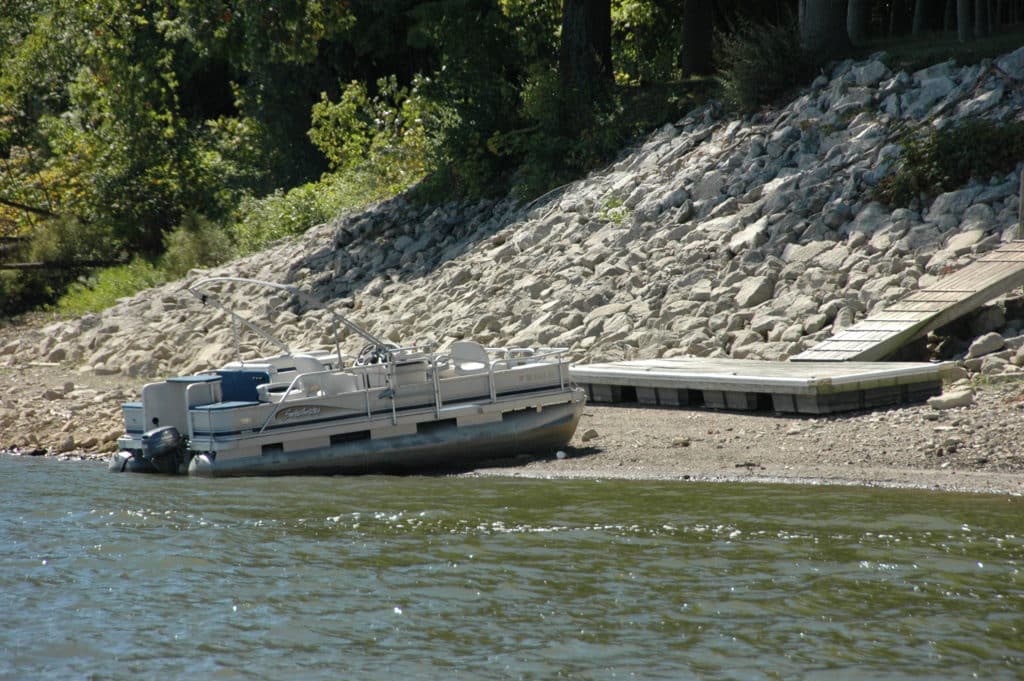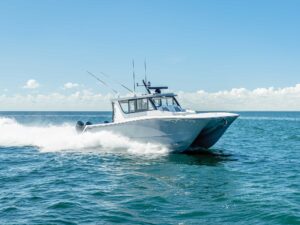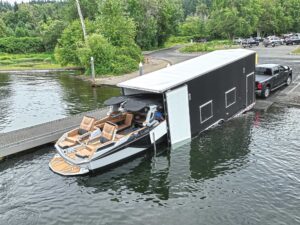
Low Water Pontoon Boat
One of the joys of owning a trailerable pontoon boat is the opportunity to take your watercraft with you when you travel. For inland boaters such as me, if those travels involve a trip to the coast with the ‘toon in tow, one learning curve you will face is as inevitable as the setting of the sun. In fact, it is caused by the sun — and the earth and moon – and is known as “tide.” As the Armitage clan ventures to warmer coastal waters to enjoy a Spring Break aboard the family boat late this month afloat, we will be dealing with tidal changes.
Tide is the vertical level of water in a particular location, and is caused by the interaction of gravitational and centrifugal forces between the earth, the sun and the moon. These forces cause the water on the earth’s surface to flow toward areas that are closest to, and those farthest from, the sun. These areas experience what are called “high” tides. The areas on the earth’s surface where this water flows from experience what are called “low” tides. At any given time, two areas of the earth are experiencing high tides and two are experiencing low tides, depending on their ever-changing proximity to the sun and the moon as the earth rotates on its axis.
What this means to coastal pontoon boaters is ever-changing water depth. Factoring in these fluctuations can mean the difference between your first maritime boating experience being remembered as a dream trip or a nightmare.
For example, the launch ramp that offered plenty of depth beneath your lower unit when you backed off your trailer in the morning may beckon you over a prop-devouring oyster bed lurking inches under the surface when you return to the same lane later in the day. Or, as I have experienced personally, a dropping tide can leave a boat beached high and dry that an hour earlier had been bobbing at anchor with two feet of water under its logs.
And that leads to another advantage of owning a pontoon boat: like a scow (look it up), pontoon boats’ hull design allows them to remain upright, list-free and level relative to the bottom that supports them when left high and dry by a tidal change. Then again, anyone who has attempted to rock and slide a multi-hull back to floatable water knows there are two sides to this argument…
Rising and falling tides can wreak havoc on any type of boat tied tight to a dock. Savvy coastal boaters learn to leave enough slack in their lines to compensate for local water level fluctuations. Fluctuating water levels and tidal currents are also an issue when anchoring.
Water depth that may offer enough scope at low tide may not offer enough angle for your anchor to keep you boat put at high tide; on the other hand, anchoring in shallow water at high tide may strand your boat when the tide drops. Tidal currents change in strength and direction, and may conspire to compromise an otherwise secure anchor job.
When boating in waters affected by tides, you must constantly factor their ever-changing influence into your plans.
DO’S AND DON’TS WHEN CRUISNG TIDAL WATERS
DO: Get an up-to-date chart of the coastal area you intend to boat and study it.
DON’T: Leave the launch ramp without referring to that chart and keeping it accessible.
DO: Always know the state of the tide in the area while you are on the water. Local Tide Tables are posted in newspapers and are usually available for free from marinas and tackle shops.
DON’T: Cross any water that you are not sure offers enough clearance for your boat and motor.
DO: Proceed slowly until you are familiar with the waters and learn when you can go where.
DON’T: Tie up or anchor your boat and leave it for any amount of time without taking into consideration the stage of the tide.
DO: Pay attention to channel markers and other visual aids to navigation.
DON’T: Ever “cut off” a channel marker, crossing shallow water, to save time. A flat or point that may have been deep enough to cross at a higher stage of the tide may not be at a lower stage.
DO: Talk to locals for local boating advice, including tidal range and low water routes.
DON’T: Run aground at high tide. Things only get worse!









